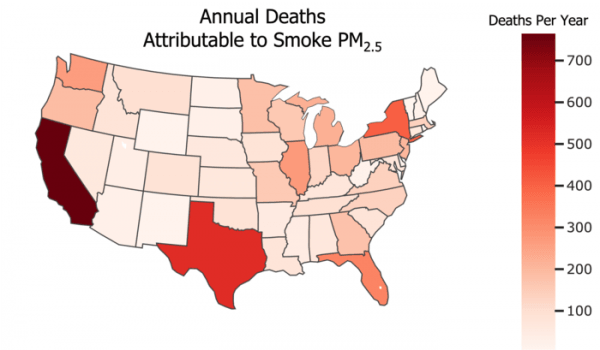While most of the largest U.S. wildfires occur in the Western U.S., almost three-quarters of the smoke-related deaths and visits to the emergency room for asthma occur east of the Rocky Mountains.
Smoke exposure, whether from wildfires or local burning, contributes to health problems across the U.S., but the impacts vary by region. A new study finds that smoke contributes to a larger percentage of health problems in the West, but affects greater numbers of people in the East — possibly when they aren’t even aware of the smoky air.
The new study was published in GeoHealth, AGU’s journal investigating the intersection of human and planetary health for a sustainable future.
In the West, where population density is generally lower and smoke concentrations are typically higher, smoke played a larger role in the number of asthma complaints and ER visits, contributing to more than 1% of annual visits in some years. In the East, with its high population density and lower smoke concentrations, there were a higher number of visits overall, even though a smaller percentage were related to smoke (0.3% to 0.6%).
Read more at American Geophysical Union
Image: While states in the Western U.S. have higher concentrations of PM2.5 pollution from smoke, more people in the Eastern U.S. go to emergency rooms due to smoke-related illness, according to a new study in GeoHealth. (Credit: O'Dell et al. (2021)/GeoHealth)


